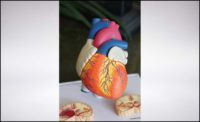We are in a new era — a time of increased realization that the indoor environment has a powerful influence on human health. This means that decisions made by architects, engineers, builders, and facility managers impact us in areas that are outside of our current set of building metrics. Building codes mandate protection from instantaneous or catastrophic emergencies, such as earthquakes, fires, or building flooding. While we also monitor and manage energy consumption, emissions from carbon-containing fuel, and indoor temperatures, we are missing many other less obvious yet important considerations.
Surprising data from new building assessment tools are showing compelling connections between occupant illnesses, synthetic surface materials, and low indoor humidity. These associations are not due to off-gassing of volatile organic compounds (VOCs) but rather are due to direct effects of inadequate water vapor on living building occupants. This includes humans, of course, but also indoor communities of microbes known as building microbiome. Microbes are initially brought into a building by people, pets, outdoor air, plants, and soil. They then respond to indoor conditions and evolve, as needed, to survive, or they die. Surviving and morphed microbes, excessively low indoor humidity, and tiny airborne particles are some of the indoor factors that directly affect the health of people who spend more than around 15 minutes indoors. Clearly, building monitoring systems that focus on energy consumption will not adequately inform us about indoor factors that affect the building microbiome and human occupants.
Thankfully, there is a way to monitor the impact of the indoor environment on living beings. No, we do not have to wait for people to drop dead or for plants to shrivel up. Monitoring health-promoting conditions simply means that in addition to traditional electronic sensors, we need to use living cells as human surrogates. The reverse situation of using electronic sensors to aid living tissues has been done for decades. For example, artificial pacemakers and insulin pumps are invaluable in keeping people alive when their faltering cardiac or pancreatic tissues cannot respond adequately to whole-body changes.
It is now time for building professionals to add living cells to their armamentarium to help detect and manage indoor conditions that are harmful to health. In addition to detecting new categories of toxins, living biological sensors can quickly detect environmental factors that play a role in both immediate illnesses as well as in long-term harm that otherwise could take months or years to manifest in a human.
Figure 3 shows some known relationships between illnesses and building components. Most of these compounds claimed decades of human health before we learned that we needed to limit our exposure to them.
While I was at the 2019 Indoor Air and International Society of Exposure Science conference in Kaunas, Lithuania, I learned about fascinating research from the University of Eastern Finland. A presentation by Dr. Kati Huttunen, titled, “Human Lung Constructs as a Model to Study Exposure to Indoor Air Particulate Matter,” showed how human bronchial and lung cells could be grown in a petri dish, covered with normal respiratory fluid, and then exposed to particulate matter. When the concentration of particles reached a critical level, damage to the respiratory cells could clearly be seen within hours of exposure.
If we added living tissue models to existing building monitoring systems, we could potentially save many years of human suffering, lost lives, and health care dollars.






